The Best Hoka Running Shoes
Hoka’s range of running shoes contains great options for every kind of runner
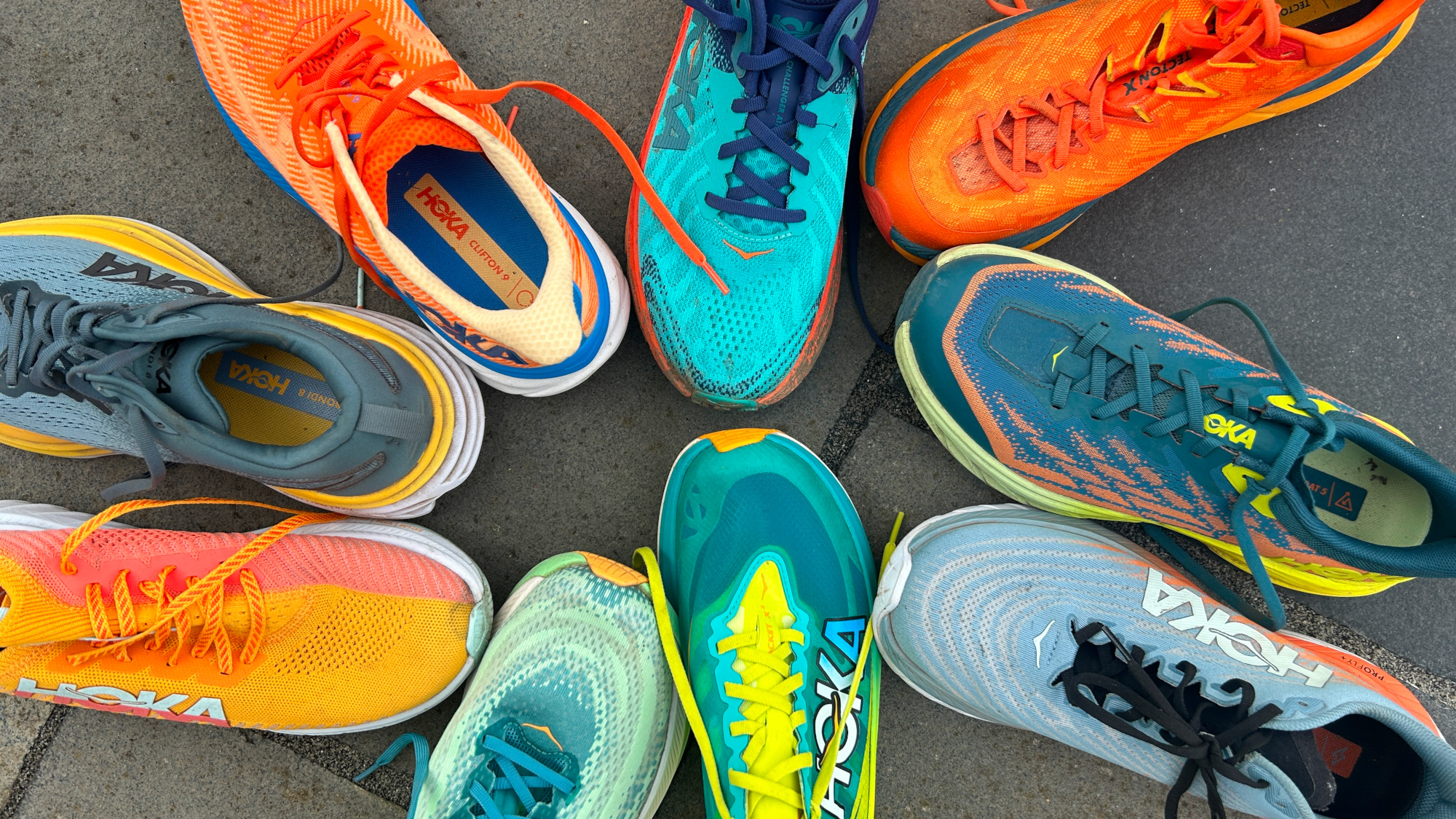
Hoka was founded in 2009, when it was known as Hoka One One, so it’s hardly a new face on the running shoe scene. But it’s a brand that’s known for bringing innovative approaches to the market.
It was Hoka that pioneered the maximalist running shoe movement, with huge stacks of lightweight foam on rockered shoes like the Bondi and Clifton. Pretty much all brands have now jumped on this bandwagon and released highly cushioned shoes, and in truth Hoka fell behind on some fronts for road running, particularly carbon plate racing shoes. But 2023 has been a strong year that has seen the brand catch up in most areas, and road runners can choose from a variety of great Hoka shoes to suit their needs.
Off-road, Hoka makes some of the best trail-running shoes on the market, and has long been popular with ultramarathon runners owing to the comfort of its cushioned designs. Even if you have no intention of hitting ultra-distances in your runs, Hoka’s trail range has you covered.
How I Tested These Shoes
You can trust Coach
I am a keen runner with a marathon PR of 2hr 28min and usually run around 50-70 miles a week on a mix of road and trails, during which time I test all kinds of running gear. I’ve tested and reviewed a variety of Hoka running shoes including most of its current range of road and trail shoes. I’ve picked the outstanding Hoka shoes for a variety of uses below. My personal favorite is the Hoka Mach 6 for its versatility.
The Best Hoka Running Shoes
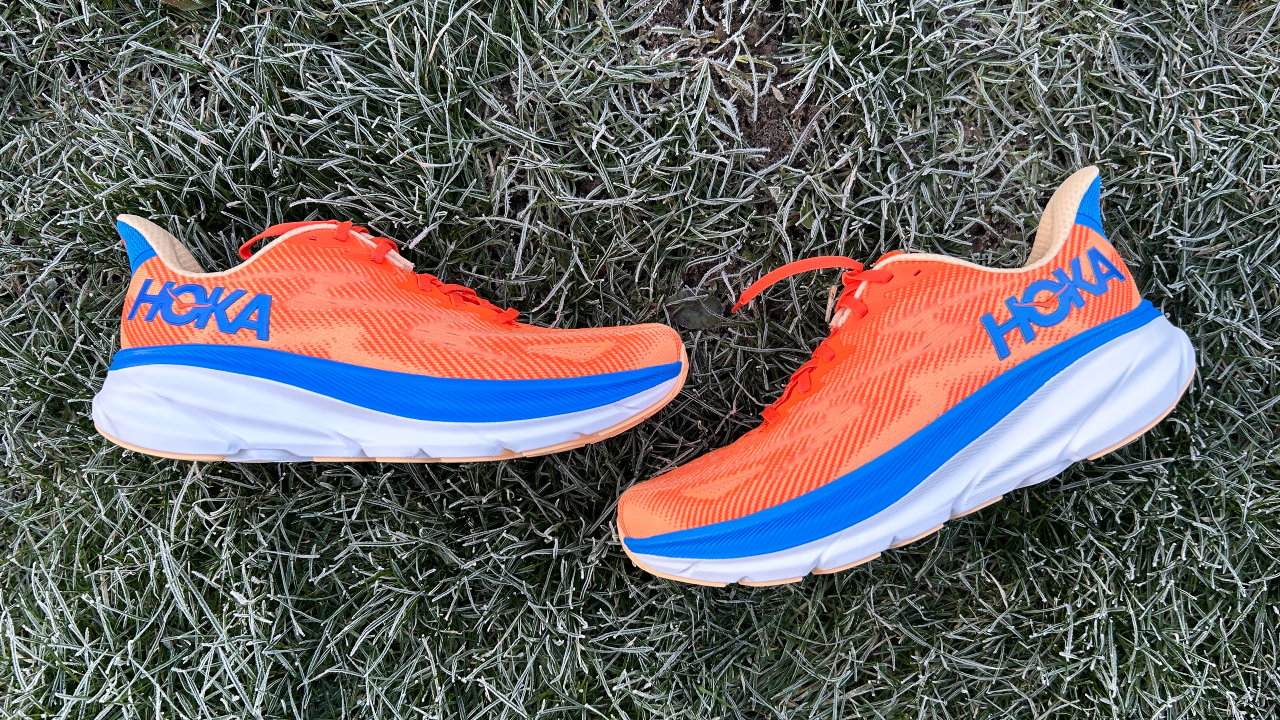
Specifications
Reasons to buy
Reasons to avoid
The Clifton 9 showcases all the best qualities of Hoka shoes. It’s comfortable and well cushioned without being too heavy. The smooth, rockered ride works well for a variety of daily training runs, from easy plods to tempo sessions. It’s also stable for a neutral shoe, and grips well in wet and dry conditions on the road.
While I prefer the lighter Mach 5 for the same kind of runs, the Clifton is a more protective and beginner-friendly option, and it’s also more durable as it has a rubber outsole. If you’d prefer an even more cushioned option for your start in the sport, the Bondi 8 is a good option.
Read more in our Hoka Clifton 9 review
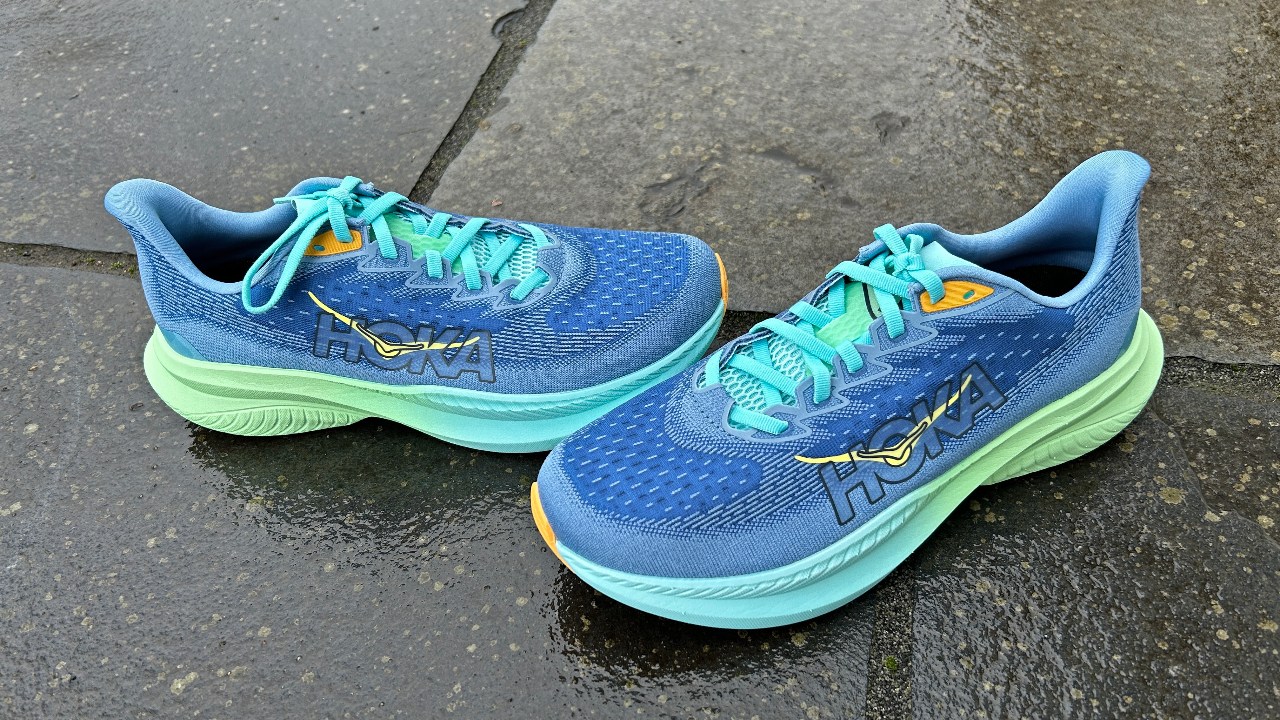
Specifications
Reasons to buy
Reasons to avoid
The Hoka Mach 6 is one of the most versatile shoes without a plate available from any brand, with a lightweight but cushioned design that makes it enjoyable to use for everything from slow long runs to fast intervals. The midsole foam is stable and bouncy, if not as springy as some materials on the market. The shoe ticks over nicely whether you’re plodding or sprinting.
A lot of the above is also true of the Hoka Mach 5, which I also found an excellent shoe, but there are upgrades on the Mach 6. One is that it has a rubber outsole as opposed to the rubberized foam on the Mach 5, which should make the newer shoe more durable. The Mach 6 also has a midsole made from Supercritical EVA foam, whereas the Mach 5 had a dual-density midsole with only a top layer of Supercritical foam, which is bouncier and lighter than the standard EVA used for the bottom layer.
Read more in our Hoka Mach 6 review
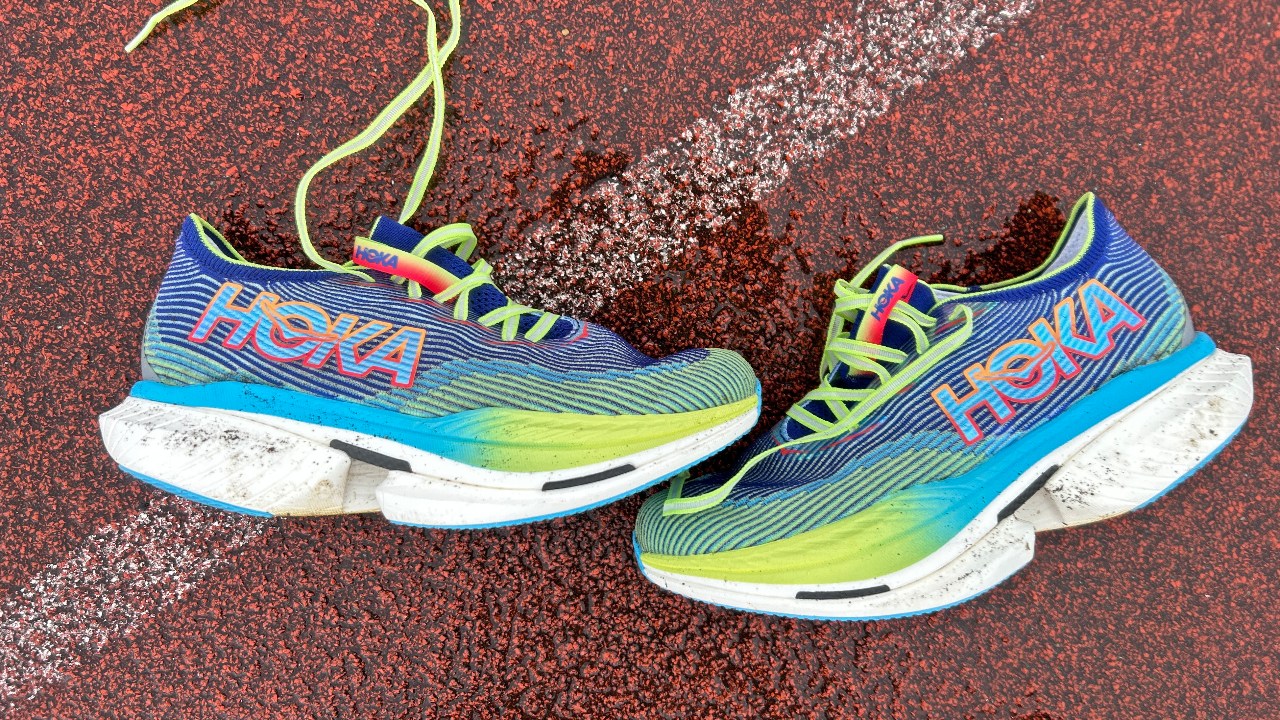
Specifications
Reasons to buy
Reasons to avoid
The Hoka Cielo X1 is one of the top marathon racing options available from any brand, with its rockered, propulsive ride helping you to lock in and hold race pace over long distances. It’s great fun to run in and despite being heavier than the Rocket X 2 it doesn’t feel bulky on the run, even when pushing to fast paces.
The extra cushioning on the shoe, along with the rocker, means it protects the legs over the long haul too—so you feel a bit fresher at the end of long hard runs and can finish strong. I also found this benefit extended to bouncing back quickly after long training runs, and felt great the day after a 24-mile marathon training run in the Cielo X1.
Read more in our Hoka Cielo X1 review
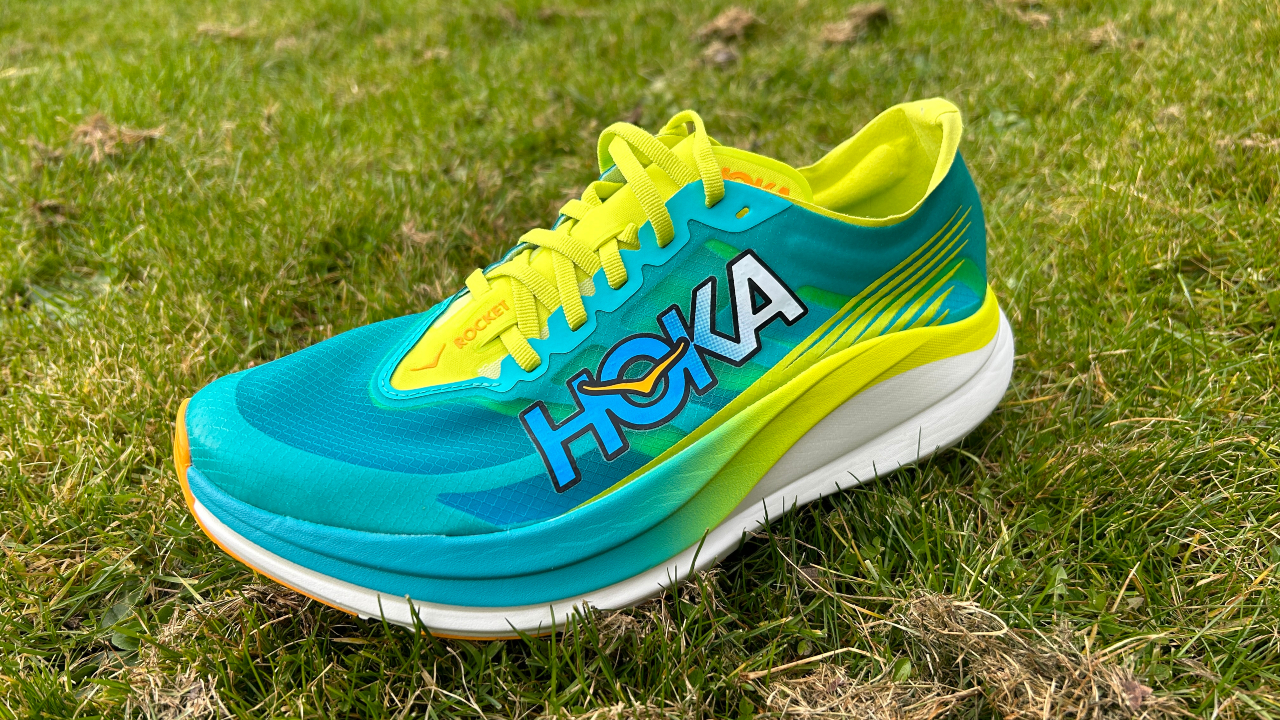
Specifications
Reasons to buy
Reasons to avoid
Hoka was one of the first brands to respond to the Nike Vaporfly by launching its own carbon shoe, but the Carbon X didn’t come close to delivering the bouncy, propulsive feel of the best super-shoes. It took a while for a proper rival to the best on the market to arrive from Hoka, but now there are two: the Rocket X 2 and the Cielo X1. Of the two, the Rocket X 2 is the lighter and more agile shoe, and is the better pick for short-distance events. It’s more stable than the Cielo X1 for rounding corners at high speeds and while it’s not as propulsive and bouncy as the Cielo X1, I appreciated the lighter design of the Rocket X 2 during short-distance races.
Read more in our Hoka Rocket X 2 review
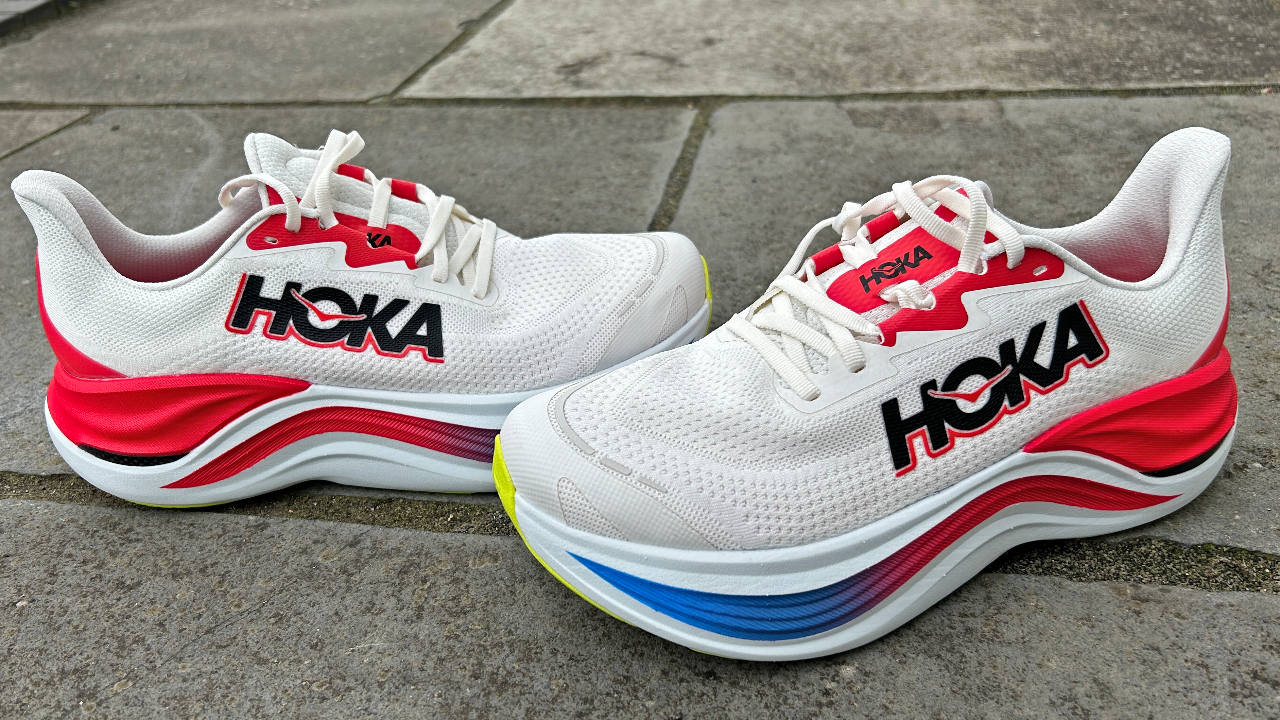
Specifications
Reasons to buy
Reasons to avoid
The Skyward X is not a traditional cushioned shoe, with a huge stack of springy foam and a carbon plate in its midsole, but it’s brilliant fun for cruising around in at an easy pace. It’s a fairly versatile shoe for daily training, even if I’d rather be in a lighter and smaller shoe for speedwork. It excels over long distance and during high-mileage weeks, protecting the legs and helping you to bounce along.
Despite its size, the ride is smooth thanks to the rocker. I consistently found that I was running at a faster pace on easy runs than I expected given the low effort. I also had no stability problems when running in the Skyward X, despite the high stack height, with the sidewalls of foam and substantial heel counter helping to make it a stable shoe.
It is expensive, and the Bondi and Clifton are better-value cushioned options in Hoka’s range. The Bondi and Clifton are also lower and have more “normal” rides, making them better suited to newer runners who want a cushioned shoe to start out with.
Read more in our Hoka Skyward X review
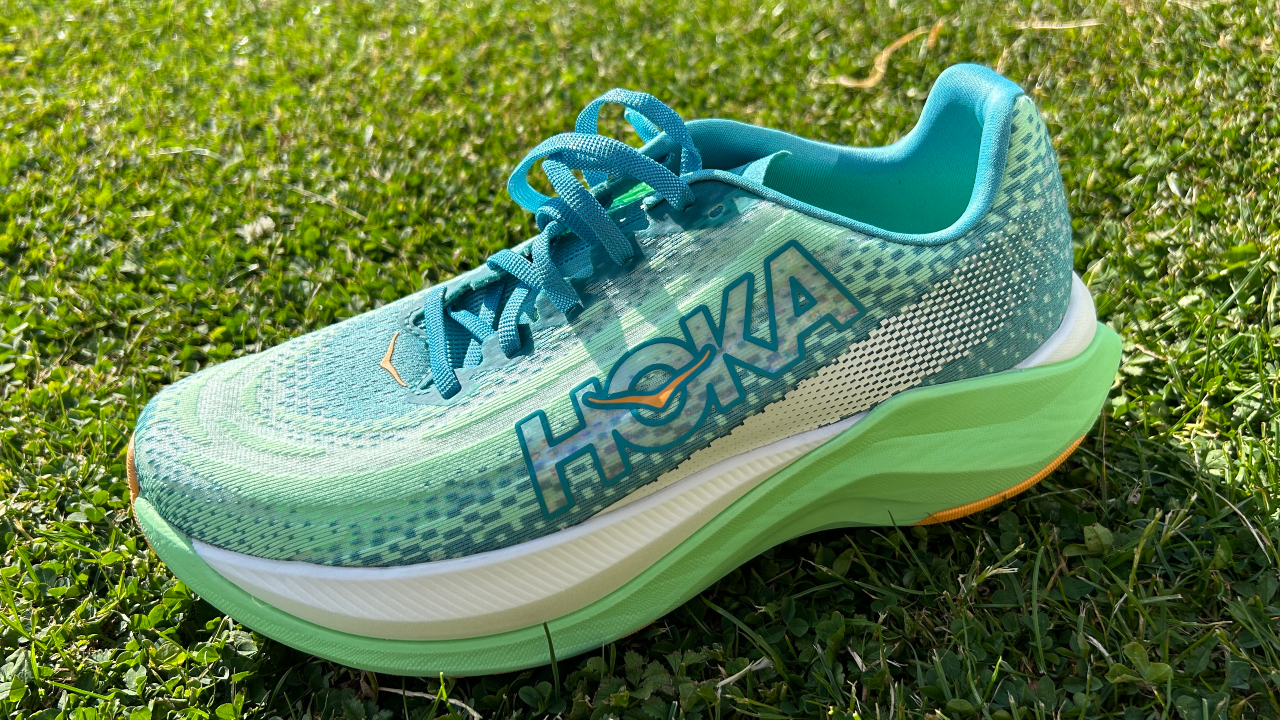
Specifications
Reasons to buy
Reasons to avoid
The Mach X looks like a supercharged Mach 5 on paper, with a PEBAX plate in the midsole adding extra pop, and a much higher midsole stack that contains a PEBA-based foam for its top layer. It also has a rocker to create a smooth ride, and some rubber on the outsole to make it more durable than the Mach 5, though I didn’t find the Mach X had better grip.
All that extra tech comes at a higher price, and I didn’t notice enough of a boost in performance from the Mach X to necessarily make it worth the extra outlay over the Mach 5 for daily training. The Mach X is a bit more comfortable over long distances, and the plate does add some pop at speed, but the Mach 5 is a lot lighter and still performs well for longer and speedier runs. The Mach X is a good option for people who want a plated shoe but have found others too squishy and wobbly, because it is stable despite its high stack.
Read more in our Hoka Mach X review
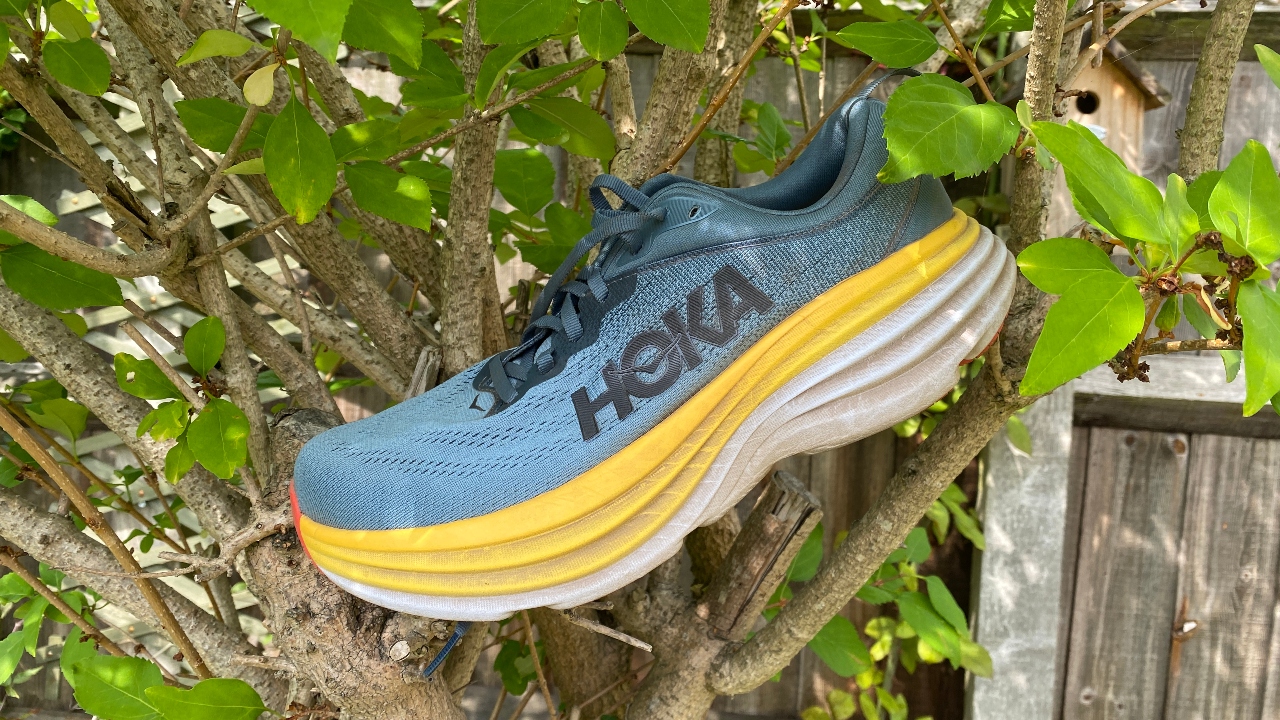
Specifications
Reasons to buy
Reasons to avoid
Even though Hoka established itself on the market because of cushioned shoes like the Bondi, I’d say it’s actually now one of the weakest areas of its range, because the Bondi 8 falls well short of the best cushioned shoes from other brands. A shoe like the Asics Gel-Nimbus 25, for example, is softer, smoother and lighter, despite having a much higher stack height than the Bondi 8.
If you’re sticking with Hoka, however, the Bondi 8 is still a solid shoe for cruising around in. It feels a bit blocky on the foot and doesn’t work well for anything beyond easy pace, but it will protect the legs well and durability is certainly not a concern.
Read more in our Hoka Bondi 8 review
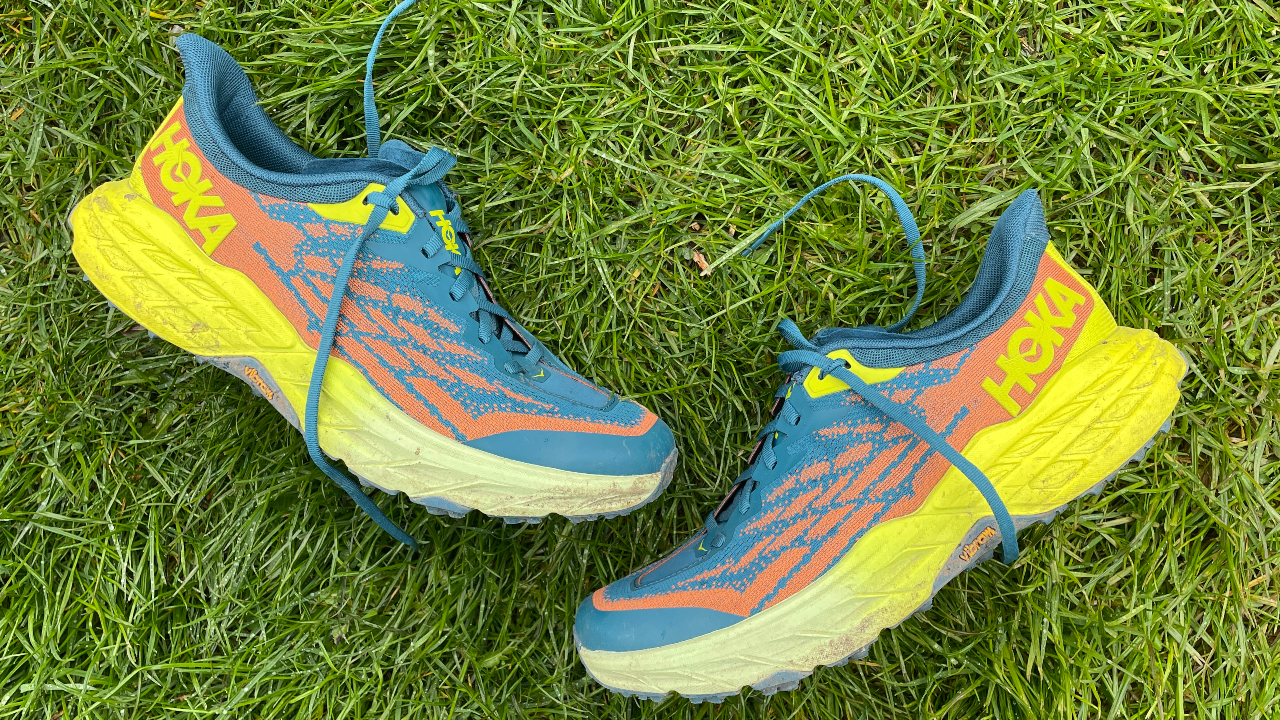
Specifications
Reasons to buy
Reasons to avoid
The Hoka Speedgoat 5 is built for ultramarathons, but even if you have no plans to log mighty distances in it, it’s still worth considering as one of the best all-round trail shoes available from any brand. It’s comfortable, I’ve found it grips well on any terrain bar very thick mud, and it’s light enough to pick up the pace in when required.
Unless you want a light and nimble racing shoe for the trails, or prefer more ground feel that you get from the relatively high-stack Speedgoat, it’s the best trail pick in Hoka’s range for pretty much any runner.
Read more in our Hoka Speedgoat 5 review
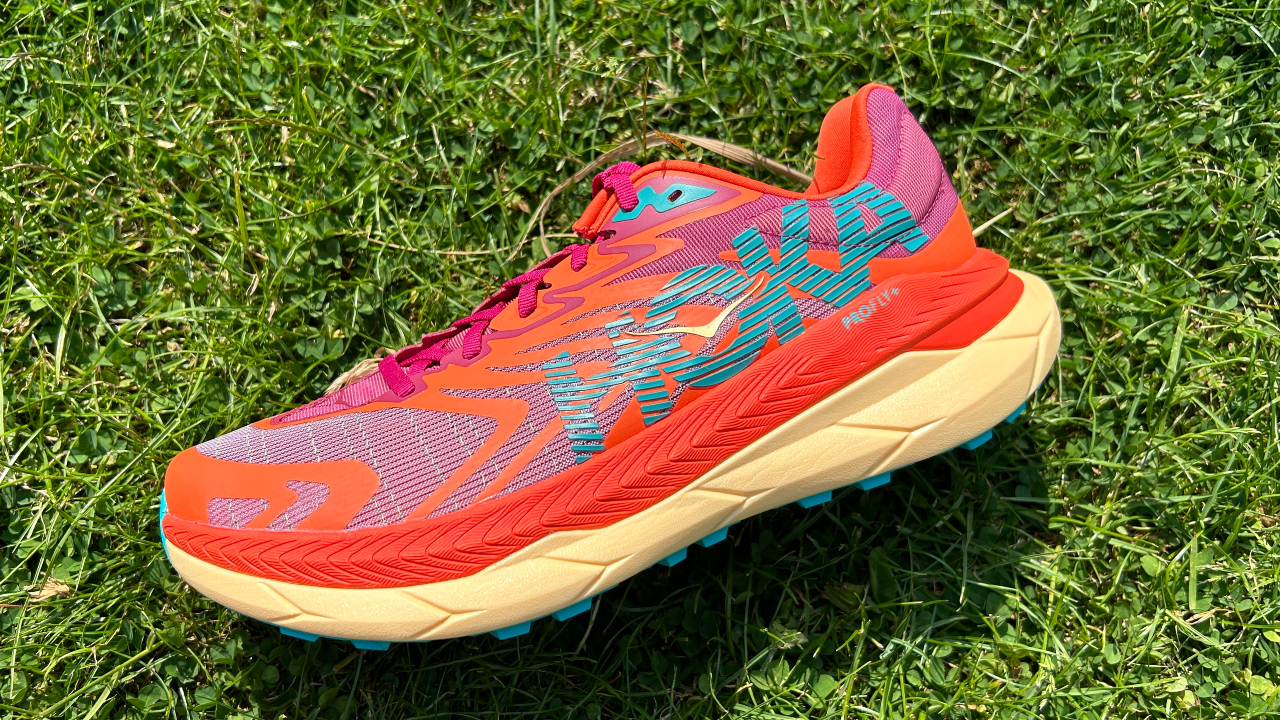
Specifications
Reasons to buy
Reasons to avoid
The twin carbon plates that run the length of the Tecton X2’s midsole add extra propulsion to its ride, making it one of the most accomplished trail-racers available on a range of terrains, though it does come unstuck in deep mud.
With a firmer and lower midsole than the Rocket X2 road racer, the Tecton X2 doesn’t have quite the same wow factor, but it is much more stable and flexible, which is important when heading off-road. It’s expensive, and there is a case for bagging the older Tecton X in a sale if you can since the shoes have the same midsole design, but if you’re on the hunt for a top-tier trail racer, the Tecton X2 matches anything on the market.
Read more in our Hoka Tecton X2 review
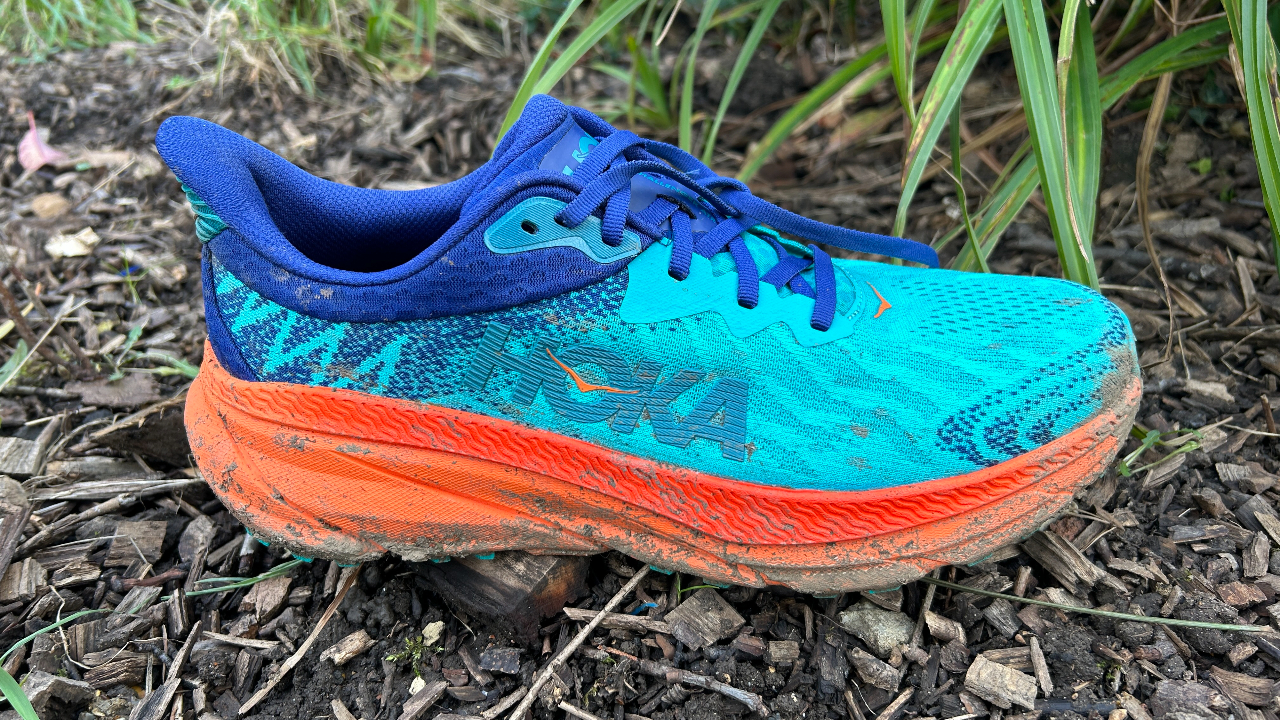
Specifications
Reasons to buy
Reasons to avoid
The Speedgoat 5 is pretty comfortable on the road as well as the trail, but if your mix of running skews more towards the asphalt with a sprinkling of trails, then the Challenger 7 might be the better pick from Hoka’s range.
It’s comfortable both in terms of cushioning and grip while on the road and light trails, and is the perfect option for those who run on canal towpaths or light park trails when possible during otherwise mostly road-based runs. I’ve also found the Challenger 7 pretty good at gripping in the snow, and it’s quite a light shoe that can handle a range of speeds well, although it’s not the most nimble on uneven ground.
Read more in our Hoka Challenger 7 review
Get the Coach Newsletter
Sign up for workout ideas, training advice, reviews of the latest gear and more.

Nick Harris-Fry is a journalist who has been covering health and fitness since 2015. Nick is an avid runner, covering 70-110km a week, which gives him ample opportunity to test a wide range of running shoes and running gear. He is also the chief tester for fitness trackers and running watches, treadmills and exercise bikes, and workout headphones.
